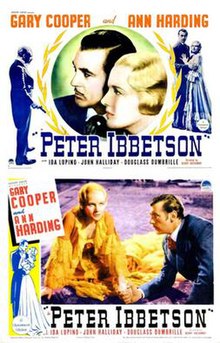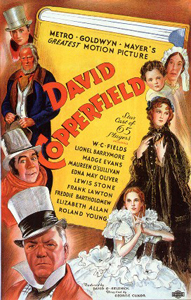
David Copperfield is a 1935 American film released by Metro-Goldwyn-Mayer based upon Charles Dickens' 1850 novel The Personal History, Adventures, Experience, & Observation of David Copperfield the Younger.

Dame Daphne du Maurier, Lady Browning, was an English novelist, biographer and playwright. Her parents were actor-manager Sir Gerald du Maurier and his wife, actress Muriel Beaumont. Her grandfather George du Maurier was a writer and cartoonist.
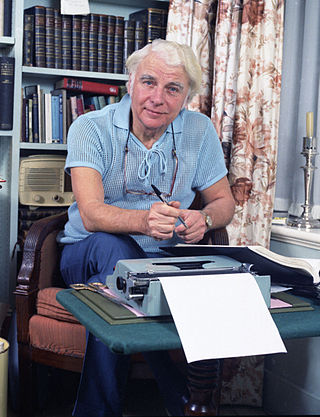
George Emlyn Williams, CBE was a Welsh writer, dramatist and actor.
The following is an overview of 1935 in film, including significant events, a list of films released and notable births and deaths. The cinema releases of 1935 were highly representative of the early Golden Age period of Hollywood. This period was punctuated by performances from Clark Gable, Shirley Temple, Fred Astaire and Ginger Rogers, and the first teaming of Jeanette MacDonald and Nelson Eddy. A significant number of productions also originated in the UK film industry.

George Louis Palmella Busson du Maurier was a Franco-British cartoonist and writer known for work in Punch and a Gothic novel Trilby, featuring the character Svengali. His son was the actor Sir Gerald du Maurier. The writers Angela du Maurier and Daphne du Maurier and the artist Jeanne du Maurier were all granddaughters of George. He was also father of Sylvia Llewelyn Davies and grandfather of the five boys who inspired J. M. Barrie's Peter Pan.

Rebecca is a 1938 Gothic novel by the English author Daphne du Maurier. It depicts an unnamed young woman who impetuously marries a wealthy widower, before discovering that both he and his household are haunted by the memory of his late first wife, the title character.

Henry Hathaway was an American film director and producer. He is best known as a director of Westerns, especially starring Randolph Scott and John Wayne. He directed Gary Cooper in seven films.
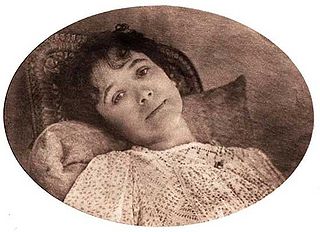
Sylvia Jocelyn Busson Llewelyn Davies was the mother of the boys who were the inspiration for the stories of Peter Pan by J. M. Barrie. She was the daughter of cartoonist and writer George du Maurier and his wife Emma Wightwick, the elder sister to actor Gerald du Maurier, the aunt of novelists Angela and Daphne du Maurier, and a great-granddaughter of Mary Anne Clarke, royal mistress of Prince Frederick, Duke of York and Albany.
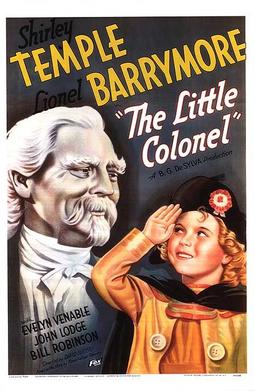
The Little Colonel is a 1935 American comedy drama film directed by David Butler. The screenplay by William M. Conselman was adapted from the children's novel of the same name by Annie Fellows Johnston, originally published in 1895. It focuses on the reconciliation of an estranged father and daughter in the years following the American Civil War. The film stars Shirley Temple, Lionel Barrymore, Evelyn Venable, John Lodge, Bill Robinson and Hattie McDaniel.

Jamaica Inn is a novel by the English writer Daphne du Maurier, first published in 1936. It was later made into a film, also called Jamaica Inn, directed by Alfred Hitchcock. It is a period piece set in Cornwall around 1815. It was inspired by du Maurier's 1930 stay at the real Jamaica Inn, which still exists as a pub in the middle of Bodmin Moor.

Forever is a 1921 American silent romance film, also known as Peter Ibbetson, that was written by Ouida Bergère and directed by George Fitzmaurice. It was adapted from George du Maurier's 1891 novel Peter Ibbetson, which was made into a play of the same name by John N. Raphael.

Charles Eaton was an American juvenile stage and film performer, and the most important performing male member of the sibling clan once referred to as The Seven Little Eatons. At one time or another, all the siblings appeared in The Ziegfeld Follies each year between 1918 through 1923.

John L. Balderston was an American playwright and screenwriter best remembered for his horror and fantasy scripts. He wrote the 1926 play Berkeley Square and the 1927 American adaptation of the 1924 play Dracula.

Marian Marsh was a Trinidad-born American film actress and later an environmentalist.
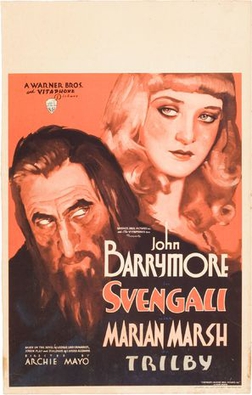
Svengali is a 1931 American pre-Code drama film directed by Archie Mayo. The film stars John Barrymore and Marian Marsh. It is based on the 1894 George du Maurier novel Trilby and was among the many film adaptations of the book. The film was shot from January 12 to February 21, 1931. On its release in the United States, Svengali received some positive reviews but did not perform well at the box office.
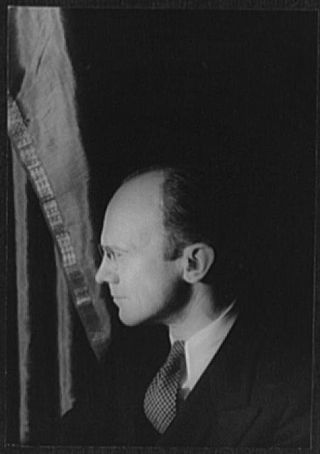
Peter Ibbetson is an opera in three acts by American composer Deems Taylor from a libretto by the composer and Constance Collier, based on the 1891 novel by George du Maurier.
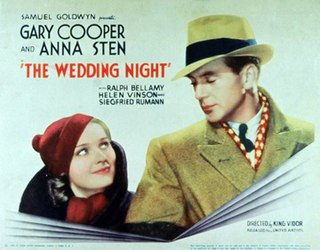
The Wedding Night is a 1935 American romantic tragedy film directed by King Vidor and starring Gary Cooper and Anna Sten. Written by Edith Fitzgerald and based on a story by Edwin H. Knopf, the film is about a financially strapped novelist who returns to his country home in Connecticut looking for inspiration for his next novel and becomes involved with a beautiful young Polish woman and her family.
Ibbetson is a surname. Notable people with the surname include:
Francis Baker was a British writer of novels and short stories, mainly on fantastic or supernatural themes. He was also an actor, musician and television scriptwriter. His best-known works are his novels, The Birds (1936) and Miss Hargreaves (1940), and his memoir, I Follow But Myself (1968).

Peter Ibbetson is a play based on George du Maurier's 1891 novel of the same name. It debuted in the United States in 1917.
